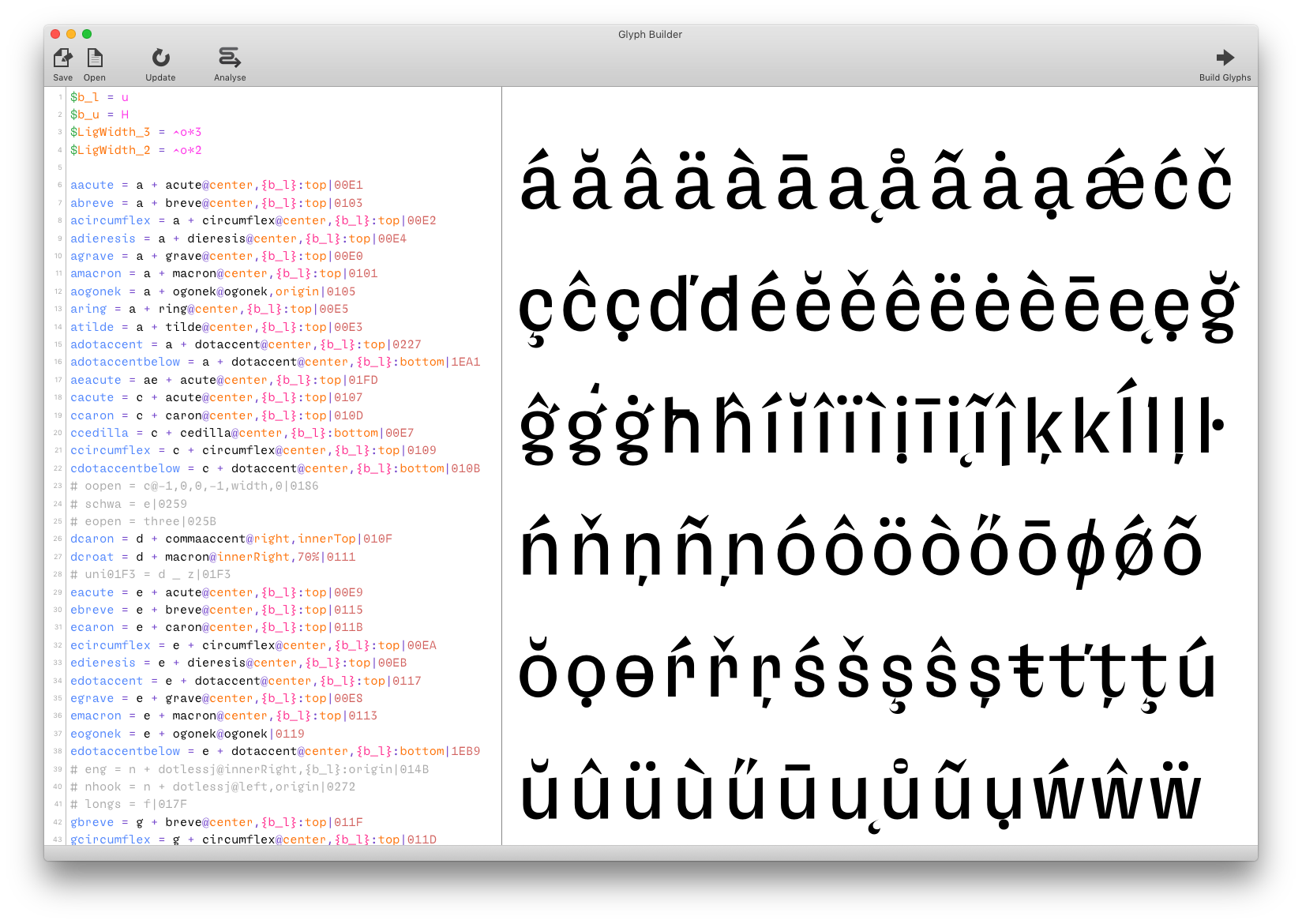Introduction:
Typography is an essential component of design. It has the power to shape the way we perceive information, elicit emotions, and convey messages. In the digital age, where every aspect of design has evolved rapidly, typography and font design have not been left behind. One of the most revolutionary tools in this realm is RoboFont, a comprehensive software designed to cater to the needs of typographers and font designers. In this blog post, we will delve into the world of RoboFont, its features, and how it is transforming the way we create and refine fonts.
The Evolution of Font Design:
Typography has a rich history, from the earliest forms of handwritten scripts to the advent of digital fonts. Throughout this evolution, the tools used by font designers have also changed. In the past, font design was a laborious process, often done by hand. Today, software like RoboFont has transformed font design into a more efficient and creative process.
Understanding RoboFont:
RoboFont is a comprehensive font editor that was specifically created for macOS. It is designed with the primary goal of streamlining the font design process. What makes it so special is its modularity, extensibility, and ease of use. It provides font designers with a powerful set of tools that simplify font creation and modification.
Key Features:
OpenType Features: RoboFont allows designers to work with OpenType features, giving them the freedom to create complex and feature-rich fonts.
Python Scripting: The software supports Python scripting, which means that designers can extend its capabilities by writing custom scripts and plugins.
Glyph Editor: The Glyph Editor in RoboFont provides a user-friendly interface for designing and editing individual characters. It’s an essential tool for font designers, enabling them to create precise and beautiful glyphs.
Kerning and Metrics: RoboFont offers advanced kerning and metrics tools, making it easier for designers to fine-tune the spacing and positioning of characters.
Multiple Masters: Designers can work with multiple master fonts within RoboFont, allowing them to create versatile fonts for different use cases.
Real-Time Preview: The software provides a real-time preview of how the font will look in various applications, making it easier for designers to assess the final product.
Workflow with RoboFont:
To create a font using RoboFont, the designer follows a structured workflow:
Designing Glyphs: The font designer starts by creating or importing the individual glyphs that make up the font.
Adjusting Kerning and Metrics: Once the glyphs are designed, the designer fine-tunes the spacing and positioning of characters to ensure a balanced and visually pleasing result.
Working with Masters: If the font requires different styles or weights, designers can create multiple masters and interpolate between them.
Testing and Preview: The real-time preview feature helps designers assess how the font will appear in various applications.
Exporting Fonts: After all adjustments are made, the font can be exported in various formats, such as OpenType or TrueType, ready for use in design projects.
Extensibility with Python:
One of the standout features of RoboFont is its Python scripting support. This feature allows font designers to create custom tools and automate repetitive tasks. The community around RoboFont has developed a vast array of scripts and extensions that can be easily integrated into the software. This extensibility gives designers unprecedented control and flexibility in their font design process.
RoboFont in Practice:
RoboFont has found its place in the font design industry, and designers around the world are reaping its benefits. Some of the ways in which it has been put to practical use include:
Custom Typefaces: Designers can create custom typefaces for branding, logo design, and other projects, tailoring fonts to the specific needs of their clients.
Reviving Historical Fonts: RoboFont is used to recreate or revitalize historical fonts, ensuring that they are preserved and remain relevant in the digital age.
Icon Design: The software is used to create custom icon fonts for web and app design, allowing for crisp and scalable graphics.
Educational Purposes: RoboFont is also employed in educational settings, teaching the art of typography and font design to the next generation of designers.
Community and Support:
RoboFont has a thriving community of font designers and developers who regularly contribute scripts, extensions, and share their knowledge. This collaborative spirit has helped the software grow and evolve. For beginners, there are numerous resources, tutorials, and forums to seek assistance and learn from experienced users.
Conclusion:
RoboFont represents a significant milestone in the world of typography and font design. Its powerful features, user-friendly interface, and extensibility have made it an indispensable tool for designers in various fields. Whether you’re creating custom typefaces for a brand, revitalizing historical fonts, or designing icons, RoboFont can significantly streamline and enhance your font design process. As we move into an increasingly digital future, RoboFont continues to be a driving force behind innovative and expressive typography.
RoboFont is not just a font editor; it’s a platform for creativity, innovation, and the evolution of typography. Join the community of font designers who have embraced this revolutionary tool and redefine the way fonts are designed and perceived. Explore the future of typography with RoboFont and unlock new possibilities in font design.



